
How to make homemade cream cheese from yogurt part 4
Tuesday 6th September 2011, Recipe 20110906
How to make homemade cream cheese from yogurt– an introduction
The last experiment on yogurt cream cheese based cheesecake was very good creamy cheese. I tried it again with 3% baking soda and found a difference. And then I realised that in the previous experiment the baking soda I had used was very old stock and it was very week. This time around I used 1% baking soda and it was much better. There are other issues but I will discuss them later.
The yogurt cream cheese recipe.
| Homemade yogurt cheese | ||||||
| Item | Ingredients | Percentage | Weight |
Weight |
||
|
(%) |
(g) |
oz. |
||||
|
1 |
Commercial Yoghurt |
100 |
1500 |
52.80 |
||
|
2 |
Vinegar | 2 tablespoons of vinegar | ||||
Final yogurt cream cheese recipe step
| Item | Ingredients | Percentage | Weight | Weight |
|
(%) |
(g) |
oz. |
||
|
1 |
Yoghurt Cheese |
100 |
600 |
21.12 |
|
2 |
baking soda |
1 |
6 |
0.21 |
Photos of yogurt cream cheese making process
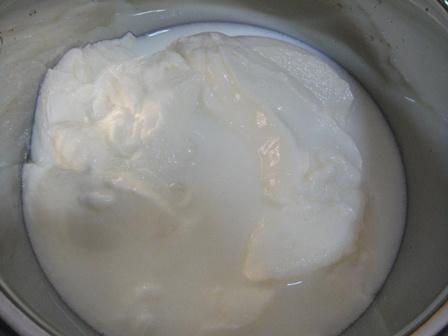
Place the 1.5kg (3.3 lbs) of commercial yogurt in a clean pot. Add two table spoons of vinegar (acetic acid) and a cup of water. The cup of water is to dilute the yogurt so that there won’t be hot spots as you heat the yogurt. It does not matter exactly how much water you use as it will be drained away later. Do add the vinegar early so that it has plenty of time to take effect.
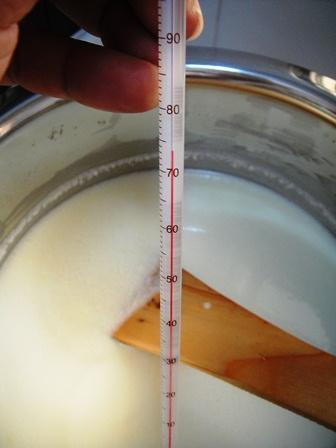
Bring the temperature up to about 70C(158F) to 73C(163F). Keep stirring it continuously and bring up the temperature slowly so that there will not be any hot spots at the bottom of the pot that can cause the yogurt to boil. The boiling will remove the cream cheese aroma. Heating to this temperature is to kill the live yogurt culture and you will be pasteurising the yogurt at the same time. We kill the live culture so that it will not carry on fermenting the yogurt cream cheese later. Once the temperature reaches 73C (163F) lower the fire and keep stirring for a few more minutes to guarantee pasteurisation has occurred. Then switch off the fire and let it cool for a minimum of two (2) hours. I found that if I cooled it for an hour and drained the yogurt cheese whey I would get 545g of cream cheese. If I waited another hour I would get 600g of cream cheese. That by waiting an extra hour I could get an extra 10% cream cheese, which means the curdling of the cream cheese hadn’t completed within one hour. You will see the cream colour in the whey if you do not wait long enough.
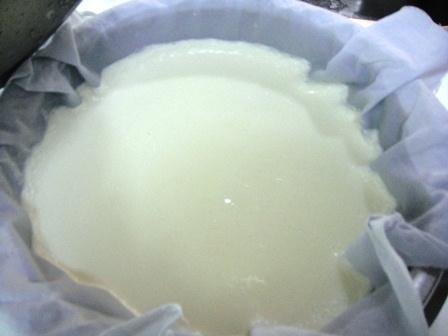
My camera didn’t work so well it seems to have lost its focus. I used a cotton cloth as my cheese cloth. One of these days I must get proper cheese cloth from Ricki Carroll. From previous experiments I noticed that if I used a thin handkerchief as my cheese cloth I would need to wait at least 12 hours for sufficient water to be drained out of the yogurt cream cheese. I am now testing out a thicker cotton cloth used to make lady’s dresses and I found that 6 to 8 hours is sufficient time to drain the yogurt cream cheese. I would guess that this is because the thicker cotton cloth acts as a blotter and ‘extracts’ water out of the yogurt cream cheese.
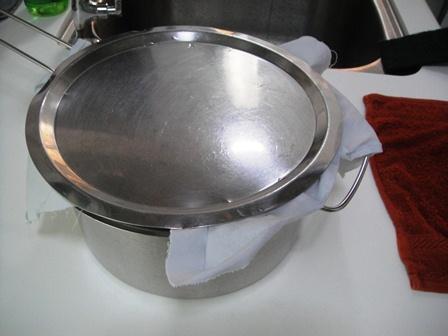
Cover the yogurt cream cheese while you are waiting for it to drain as you do not want fungal spores, that are floating in the air around us, to drop into the cream cheese during this process.
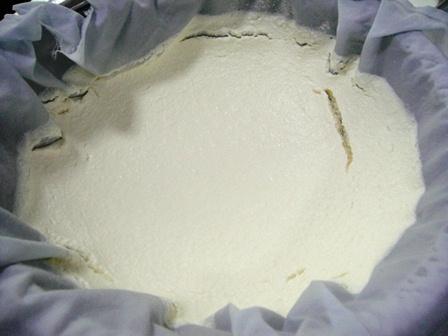
Just 6 hours of draining is required by using the thicker cotton cloth.
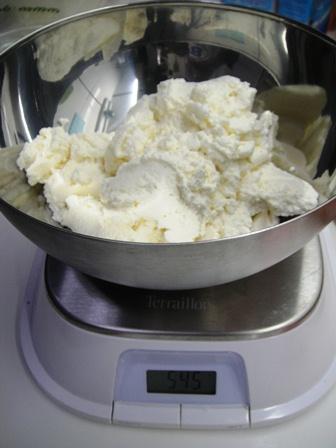
As you can see there is only 545g (1.2 lbs) of cream cheese instead of 600g (1.32 lbs) as I had waited an hour, for cooling, before draining the cheese. If I had waited two or more hours, for cooling, there would be 600g (1.32 lbs) of cream cheese.
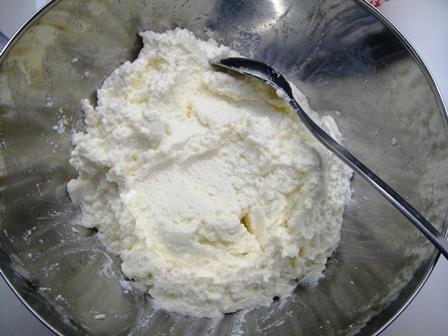
I added 1% baking soda into the yogurt cream cheese to knock off the acidity, see my previous article on yogurt cream cheese, and the resulting reaction acts to block any fungal or bacterial growth. This time around I didn’t need to use kitchen towels to blot out the water formed.
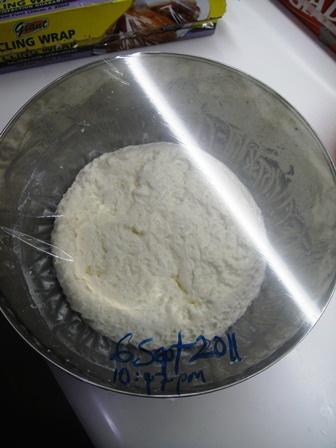
I wrapped the cream cheese with shrink wrap and kept it in the fridge for 3 days. The taste tends to get creamier after 3 days. I am not sure why this happens but can only guess that there is some residual enzymatic reaction going on that improves the flavour.

I added 10% icing sugar (10% of the weight of the cream cheese) and it turned like a glaze and had a jelly like texture. I use icing sugar as it is easier to dissolve. Normal sugar will feel crunchy when you eat the cream cheese. I do not know why this happens and it may be due to the lower fat content in the yogurt compared to standard cream cheese recipes. I suspect that the sugar molecules temporarily bind with the water in the cheese and the cheese become slightly translucent and jelly like as the milk proteins lose some water molecules to the sugar. Even the flavour changes for a while. When you leave it for a few days the cream cheese flavour recovers and it did taste good.

My mom added some fruits on top and after three days in the fridge it did taste pretty good.
This article “How to make homemade cream cheese from yogurt part 4” was researched and written by Peter Achutha.
Leave a Reply